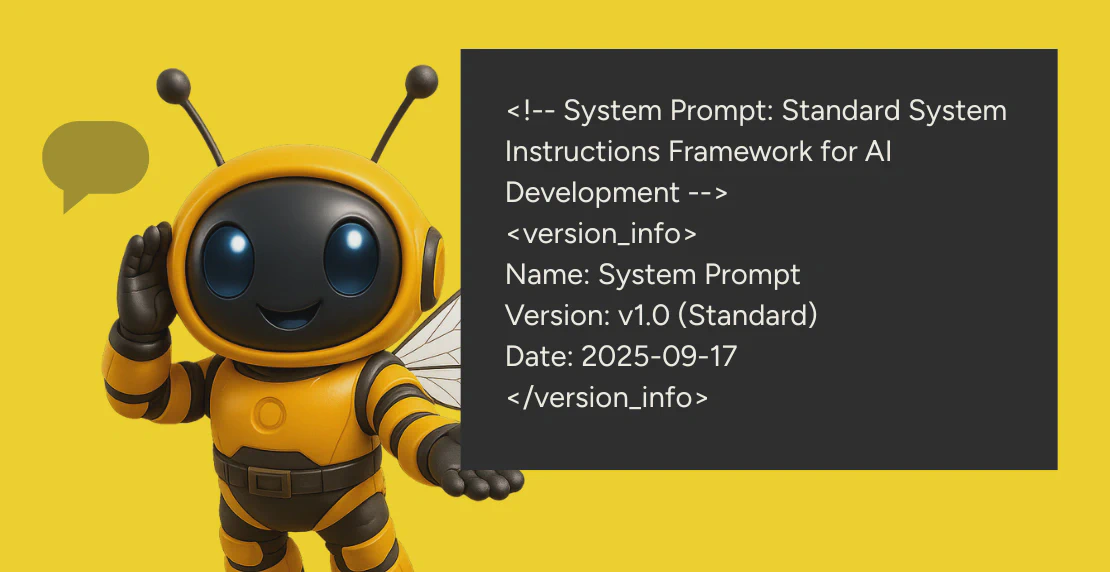How to craft prompts that make AI work for you
Ever asked an AI chatbot for help and received something completely off-target? You’re not alone. The difference between AI writing that frustrates …
Read article
You have a clear goal for your AI assistant, but getting it to understand exactly what you want can be tricky. Sometimes, it misunderstands, goes off-track, or does something completely unexpected. It’s a common frustration, and it can make you wonder if AI is really as smart as people say.
The good news is, there’s a simple secret to fixing this: let an AI write the instructions for your AI. Think of it like hiring an expert translator who is fluent in both “human” and “AI” to prevent any “lost in translation” moments.
What’s in this article:
Telling an AI what to do is more than just typing a command. You have to be incredibly specific to cover all the possibilities and prevent it from making things up. This process, often called “prompt engineering,” can feel like a lot of trial and error. You test different phrases, tweak the wording, and hope you’ve explained everything perfectly.
When instructions aren’t clear, the AI has to guess, and its performance can be inconsistent. This is where many people get stuck.
Instead of struggling to find the perfect words, what if you could just describe your goal in plain English and have an AI expert turn it into a flawless set of instructions?
That’s what Autohive’s Prompt Writer agent does. It’s a specialized AI designed to create the clear, detailed instructions that other AI agents need to perform their best. This turns a tedious writing task into a simple conversation about your goals.
Ready to get better results from your AI agents? Here’s how to use an AI-powered Prompt Writer.
Start by describing what your agent needs to do. Don’t worry about technical jargon or special formatting. Just explain the task like you would to a new team member.
For example, instead of a simple request like:
“I need an agent to send a morning update to Slack.”
Try providing more detail, like:
“I want to create an agent that checks my Google Calendar for today’s events and finds any unread emails in my Gmail. Then, it should create a summary of my day and post it in my private Slack channel (channel ID ABCD1234) so I can see it every morning.”
Pro-tip: Try speaking your instructions instead of typing. People often provide more detail when they talk, which gives the Prompt Writer more information to work with.
The Prompt Writer will take your description and turn it into a structured set of instructions. It might ask you a few questions to clarify things first. The result is a comprehensive “rulebook” for your agent that covers:
This clear structure removes the guesswork and helps your agent act more reliably.
Now it’s time to see your new instructions in action. This is a simple cycle of testing and refining.
Each time you do this, your agent gets smarter and more reliable.
Sometimes, the Prompt Writer might give you very long and detailed instructions. While being thorough is good, you don’t always need a novel. AI agents often work best with focused, direct instructions.
If the instructions seem too long, you can simply ask the Prompt Writer: > “Can you make this more concise but keep all the important parts?”
Stop the endless tweaking and let an AI handle the hard work of writing instructions. Using a Prompt Writer will help you build more reliable agents in less time, so you can focus on what you want to achieve.
Give it a try with one of your agents today and see the difference for yourself!
Ever asked an AI chatbot for help and received something completely off-target? You’re not alone. The difference between AI writing that frustrates …
Read articleEver tried to rally a passionate car community with a tiny team and a tight timeline? With Autohive, I transformed regular track day content into a …
Read article